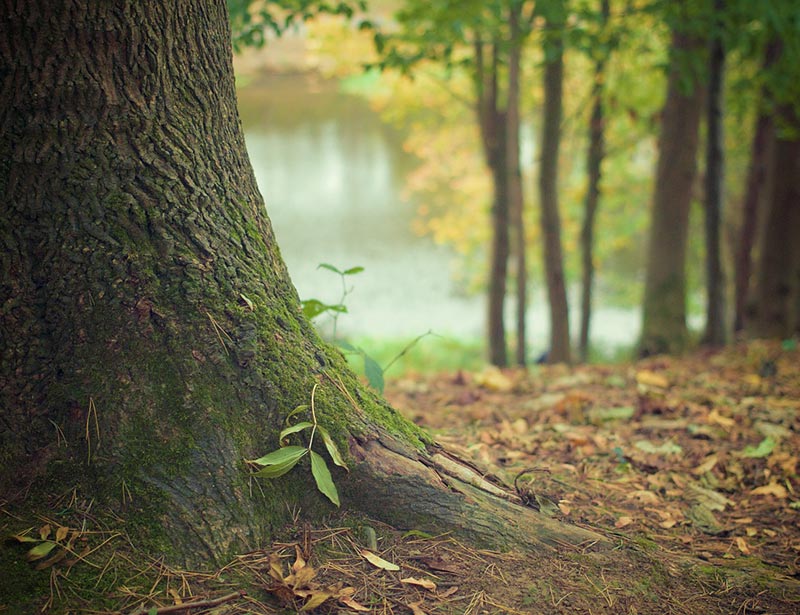Trees can be beautiful when the foliage changes with the fall season, but as they get older their roots can become a plumbing problem. As you rake leaves, take notice of where your water and sewer lines are in relation to root systems. If you plant bulbs nearby, verify the moisture of the soil is what you would expect. Too much moisture can be a sign of an already existing problem. And if you are planting a tree, it might be helpful to understand which ones are good for your landscape design and which ones could be a plumbing disaster waiting to happen.
Most problems occur after the roots grow and intertwine around your lines or penetrate them. The beautiful, large, live oak trees are just one variety that needs a lot of room to grow. Older live oaks along the coastal city areas of Savannah, Brunswick, and Hilton Head can be especially problematic to plumbing. When the groundwater is found only a few feet below the surface, roots don’t have far to go to access water and the loose, nutrient rich soil makes growth quick and easy.
The outward growth of their root systems when a tree matures should be considered that when planting or making landscaping changes. A general rule of thumb when planting a new tree is that the distance for the maximum height is the same as the distance you should leave around the base for the root system to grow. Even so, some trees are notorious for causing plumbing problems and you might be surprised that many of these are popular choices for landscaping around your house.
We have put together a list of four trees that are more susceptible in damaging systems so you can avoid costly plumbing repairs.
Oak Trees
The majestic oaks can take dozens of years to grow and have extensive horizontal root systems that reach great lengths. It is the supplemental roots of these sturdy trees that can wreak havoc on your plumbing system. These supplemental roots can often grow up to 100 yards out from the base. Although live oaks grow at a slow pace, many of these older giants are found along the coast of Georgia and South Carolina. And many are protected so you will need to check with your city or county to see what can be done if you have a problem with the roots of a live oak.
Fruit Trees
You might love your Bradford pear and cherry trees when they bloom in spring and you might love the taste of peach, pear, and figs. But fruit-bearing trees need oxygen, nutrients, sunlight, and moisture to grow properly. All too often they are planted near your house, where they are not getting what they need. So their roots venture in search of better nutrients, sunlight, or moisture. As the roots grow beneath your home, the can cause major damage to your piping and foundation.
Magnolia Trees
The beautiful, scented flowers of the magnolia are a southern favorite. However, their rather large, rope-like roots grow horizontally along the surface instead of deep into the ground and can be quite invasive. That is not a good situation for any homeowner who has water and sewer pipes in the ground nearby. To make matters worse, the roots are flexible so that they work their way around and into your piping system.
Poplar Trees
The tall, graceful canopies of the poplar can provide a nice shade for the hot summers. But their root systems can be very invasive, growing rapidly near the surface. They are not good choices when planted close to a building. Even at a distance, their roots can travel far to cause damage. The length of a poplar tree’s roots can grow two to three times as the height at maturity. That means a mature poplar with an average height of 80 to 150 feet could have a root system of 160 to 450 feet from the base of the tree. We hope you have a large piece of property when you plant a poplar.
Anytime a tree is growing near your house you risk the potential for plumbing problems. And although the root systems of all trees, shrubs, and plants can cause damage, the above list contains some of the varieties known for their sturdy, flexible, extensive root systems that regularly cause leaks when they grow near water and sewer lines.
Ideally, you should consider moving a tree if it is close to your home and lines. And if you already suspect a problem or are concerned about future problems, it is a good idea that your plumber evaluates the piping in that area. When roots have grown within the pipes, they can often be removed via the high pressure of hydro jetting.
High Priority Plumbing has an office in Savannah to help evaluate and repair problems with your lines. Call us at 912.373.7707 for more information.
